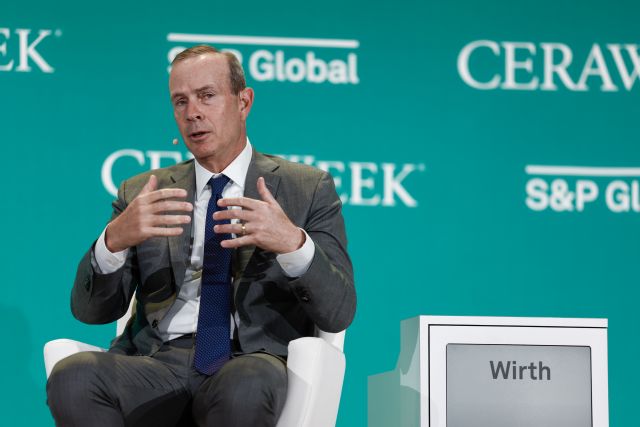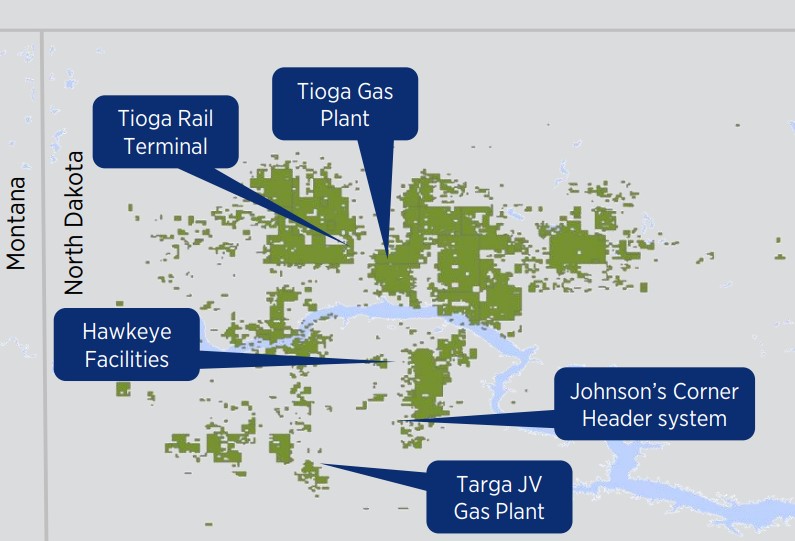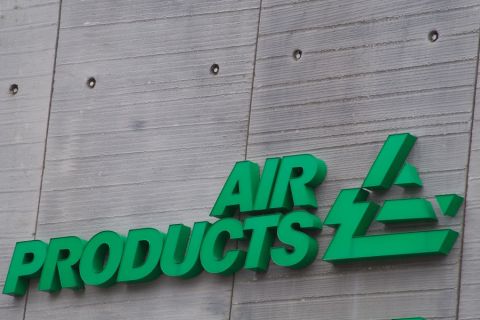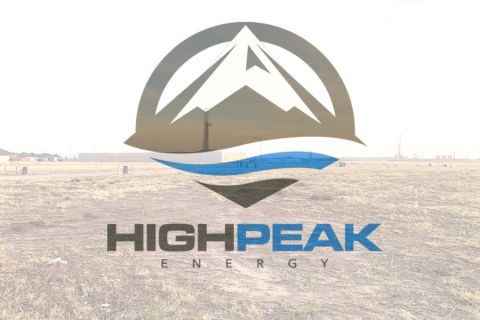
Chevron Chairman and CEO Mike Wirth at CERAWeek. (Source: CERAWeek)
California major Chevron is setting aside $6.5 billion to develop its U.S. shale portfolio next year, with the bulk of the spending planned in the Permian Basin.
San Ramon, California-based Chevron Corp. expects organic capex to range between $15.5 billion and $16.5 billion in 2024, the company announced Dec. 6.
Upstream spending will account for about $14 billion of total capex, two-thirds of which will be allocated to U.S. development.
Of the company’s $6.5 billion for U.S. shale and tight portfolio, about $5 billion will go toward the company’s large footprint in the Permian Basin.
RELATED
Chevron CEO: Upstream Returns to be ‘Structurally Higher’ than Downstream
The company has ambitious plans in the Permian, the nation’s top oil-producing region and a key driver of Chevron’s future production growth.
Chevron’s third-quarter operated production in the Permian averaged 777,000 boe/d during the third quarter. The company aims to ramp production up to 1 MMboe/d by 2025.
With its acquisition of PDC Energy earlier this year, Chevron is also overseeing a larger position in the Denver-Julesburg (D-J) Basin in Colorado.
And Chevron is also entering a new shale play, the Bakken Shale in North Dakota, with the blockbuster acquisition of Hess Corp. announced in October.

Around a quarter of Chevron’s upstream spend is set aside for projects in the Gulf of Mexico (GoM), including the Anchor project, which is expected to achieve first oil next year. The Hess acquisition will also deliver incremental growth for Chevron in the GoM.
Downstream capex is expected to be around $1.5 billion in 2024; 80% is allocated for U.S. projects.
Chevron is also allocating around $2 billion in both its upstream and downstream capex for low-carbon investments.
“We’re maintaining capital discipline in both traditional and new energies,” Chevron Chairman and CEO Mike Wirth said in a news release. “These investments are expected to underpin durable free cash flow growth to support our objective of returning more cash to shareholders.”
The company is also allocating $3 billion for affiliate capex in 2024. Nearly half is planned for Chevron’s operations in the Tengiz Field in Kazakhstan. Chevron owns a 50% interest in Tengizchevroil (TCO), which operates the Tengiz Field and the nearby Korolev Field.
A third of affiliate capex is budgeted for Chevron Phillips Chemical Co., a joint venture between Chevron and refiner Phillips 66.
Spring, Texas-based major Exxon Mobil Corp. announced plans to spend between $23 billion and $25 billion in 2024.
Exxon expects total annual capex to range between $22 billion and $27 billion from 2025 through 2027, the company said in a Dec. 6 investor update.
Exxon is also growing in the Permian Basin with its $60 billion acquisition of Pioneer Natural Resources. Combined, the companies will have an estimated 16 Bboe resource in the Permian.
RELATED
Exclusive: Exxon, Pioneer Expect Tough Federal Scrutiny of $60B Deal
Recommended Reading
BP’s Kate Thomson Promoted to CFO, Joins Board
2024-02-05 - Before becoming BP’s interim CFO in September 2023, Kate Thomson served as senior vice president of finance for production and operations.
Magnolia Oil & Gas Hikes Quarterly Cash Dividend by 13%
2024-02-05 - Magnolia’s dividend will rise 13% to $0.13 per share, the company said.
TPG Adds Lebovitz as Head of Infrastructure for Climate Investing Platform
2024-02-07 - TPG Rise Climate was launched in 2021 to make investments across asset classes in climate solutions globally.
Air Products Sees $15B Hydrogen, Energy Transition Project Backlog
2024-02-07 - Pennsylvania-headquartered Air Products has eight hydrogen projects underway and is targeting an IRR of more than 10%.
HighPeak Energy Authorizes First Share Buyback Since Founding
2024-02-06 - Along with a $75 million share repurchase program, Midland Basin operator HighPeak Energy’s board also increased its quarterly dividend.





